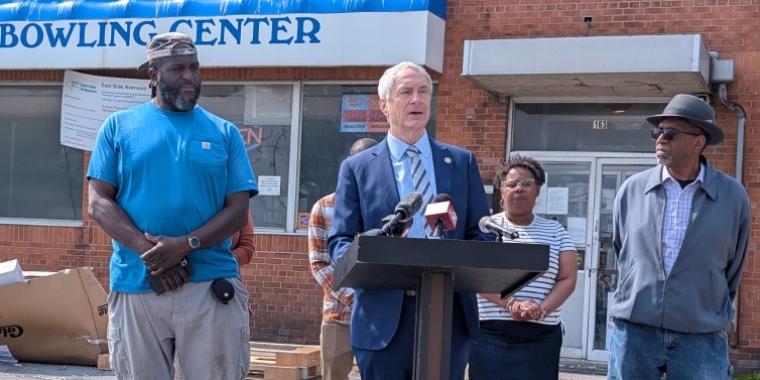
Op-Ed: Protecting 1 million acres of New York wetlands with the stroke of a pen
New York's wetlands are important to nearly every living being in our state. They provide critical habitat for species like ducks, deer, and turkeys – and you may already know that they are home to nearly half of the threatened and endangered species in the state.
But believe it or not, wetlands provide even more benefits for the people of New York. From absorbing flooding and storm surge, to filtering water of pollutants and acting as one of the most effective carbon sinks, wetlands play a critical role in protecting our state from the worst impacts of climate change. Wetlands store 35% of the world's carbon – that's equivalent to the carbon emissions from roughly 189 million cars every year!
However, despite all of these benefits, our wetlands are constantly under threat. New York State has already lost 60% of its historic freshwater wetlands. Unfortunately, the way we protect wetlands in the state is woefully outdated, and in many cases has led to a lack of protection for the most critical wetlands. The current Freshwater Wetlands Law only protects wetlands 12.4 acres and larger that appear on a set of jurisdictional maps.
These maps were created in the 1970s and 1980s with outdated technology, leading to nearly 1 million acres of wetlands lacking any state-level protection. You read that right – there are 1 million acres of wetlands that should be protected, but are not because of these arcane maps. Additionally, for any wetland smaller than 12.4 acres, there is a murky set of rules used by the Department of Environmental Conservation (DEC) that often makes it unclear to both regulators and landowners where a wetland exists and whether it should be protected.
For years, individuals and organizations throughout the state have been sounding the rallying cry to protect these wetlands and make the system clearer for all. In 2021, these efforts led to legislation being introduced in the state that would detach the outdated wetland maps from determining which wetlands are protected – reforms that ultimately appeared in Governor Hochul's proposed budget for 2022. If they are included in the final state budget, these reforms will mark the most significant improvement to this law in three decades. The reforms would provide protection for wetlands smaller than 12.4 acres that have “unusual importance” and any wetland larger than 12.4 acres, saving 1 million acres of wetlands.
The criteria the DEC can use to protect wetlands would be made clearer, removing confusion when determining whether a wetland requires protection. These criteria are clearly presented and use measurable, scientific features (like the existence of aquatic plants and hydric soils) that will definitively determine whether an area is considered a wetland. One such aspect is the focus on “state species of special concern,” which ensures the state's most vulnerable bird, animal, and plant species – like the American Black Duck and Saltmarsh Sparrow – will have their habitats protected. With the persistent uncertainty surrounding wetlands protections at the federal level, it's time for New York to take care of its wetlands on its own terms.
As an avid outdoorsman and as a legislator, I've seen firsthand the vital role wetlands play for both outdoor recreation and preventing property damage and loss of life. With the increasing frequency of flooding events throughout the state, natural infrastructure provides an effective and economical way to protect our communities and our environment. Having co-sponsored legislation to make these changes, I'm fully supportive of the reforms proposed in Governor Hochul's budget and will work to include them in the Senate's budget this spring. These changes are a long time coming – for the wetlands and for all of New York.
